How to Make and Can Your Own Jam
Our step-by-step guide takes you through the process.
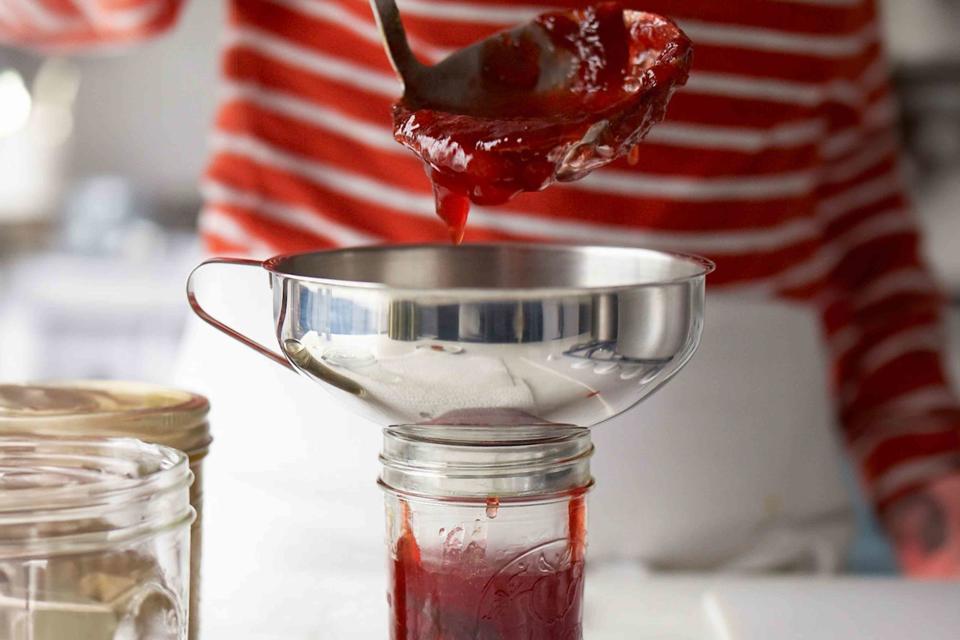
John Kernick
Canning is a technique that can (understandably) intimidate even the experienced cook: All that steam, heat, pressure, and glass can be a lot to keep safe tabs on. Yet the process of canning has the potential to yield such satisfying rewards. A pantry full of jam that will keep for a year (or more) is a treasure trove for toast lovers, not to mention a cache of gifts ready for the giving.
In this step-by-step guide, we explain the basics of canning, including an overview of the tools you'll need and important safety tips. After you've mastered the essentials, you may want to try other fruit jams or easy vegetables such as corn, cucumbers, green beans, or tomatoes. And once you're comfortable with these, you'll be ready to move on to more elaborate recipes. Although preserving can be hot, sticky work, we're sure you'll find the rewards are glorious.
Related: How to Can Tomatoes the Right Way
What You'll Need

Boiling-water canner or similarly deep pot (think lobster-pot size)
Canning rack (some canners come with canning racks)
Jars, lids, and bands
Jar-lifting tongs
Headspace-measuring tool
Clean dish towels
Labels
Timer
Canning supplies are available at hardware stores, supermarkets, and supercenters and from Lehman's.com. For more information on supplies, consult freshpreserving.com (the official website of Ball, the consummate canning resource).
Safety Tips
Be sure to check your supplies before you start. Bands should screw evenly over lids; jars should be free of scratches or chips, which could cause seal failure during processing or sealing.
Next, remember that you should not reuse lids. Jars and bands can be recycled, but the flat lids are for one-time use only.
Last but not least, cool carefully. Never place hot jars directly on kitchen counters; the glass might crack. Use a dish towel or a cooling rack instead.
Ingredients
Yield: Makes four half-pint jars
3 pounds plums (or other stone fruit such as peaches, nectarines, or apricots), pitted and quartered
3 cups organic sugar
1 tablespoon fresh lemon juice
3⁄4 teaspoon kosher salt
How to Make Jam
Wash Jars and Lids and Sterilize Jars

Wash jars and lids with soapy water, dry bands, and set aside. Place jars in a large pot and cover with water. Bring to a simmer. Put lids in a separate pot of hot water. Leave jars and lids in water until ready to fill.
Mix Fruit, Sugar, Lemon Juice, and Salt
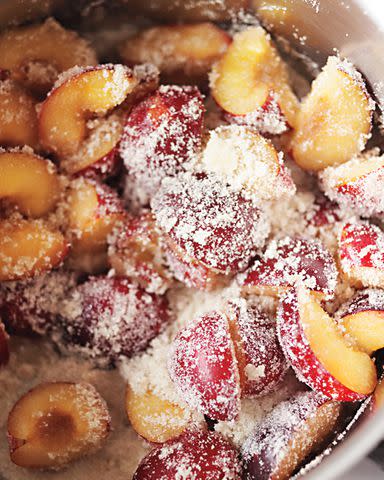
Combine plums, sugar, lemon juice, and salt in a stockpot over high heat.
Bring to a Boil

Bring to a boil, mashing with a potato masher. Skim scum off top.
Boil, Skimming and Stirring Fruit
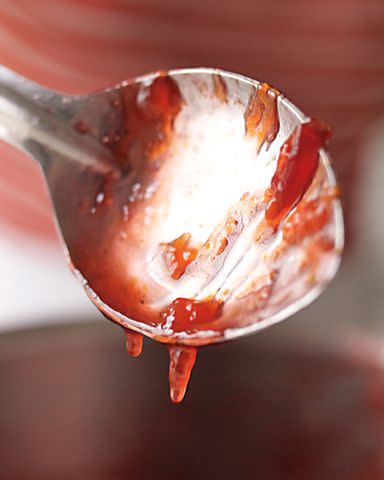
Boil, skimming and stirring frequently, until bubbles slow and you can see chunks of fruit showing through top and mixture clings to a spoon, falling off in languid clumps, 10 to 12 minutes. Pick up and discard skins with a fork, if desired.
Ladle Jam Into Jars
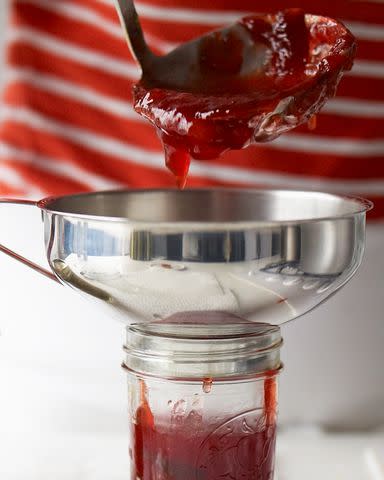
Lift jars out of hot water one at a time, draining water. Ladle hot jam into hot jars using a wide-mouth funnel, leaving 1⁄2-inch headspace. Slide a nonmetallic spatula or chopstick between jam and jar to release trapped air bubbles.
Wipe and Seal Jars
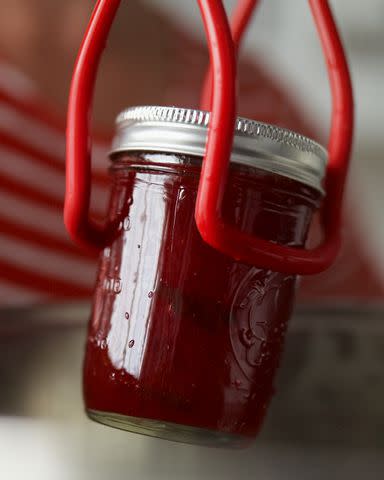
Wipe rim and threads of jar with a clean, damp dishcloth. Remove lid from hot water. Place lid on jar. Screw band down evenly and firmly, just until resistance is met.
Process in Hot Water Canner
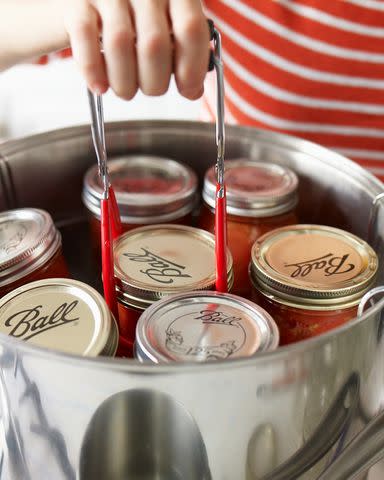
Place in canner and lower into water. Put lid on canner. Bring water to a boil. Start keeping time after water comes to a rolling boil. Process 1⁄2 pint jars for 10 minutes at a gentle but steady boil.
Dry Jars and Let Cool
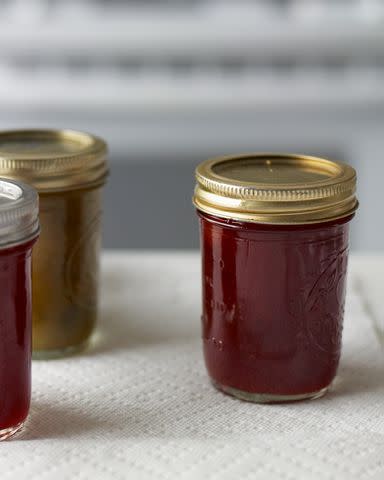
Turn off heat and remove canner lid. Let canner cool five minutes, then remove jars and set them upright on a dry towel or rack. Do not retighten bands. Let jars cool 12 to 24 hours.
Check Jars Have Good Seal
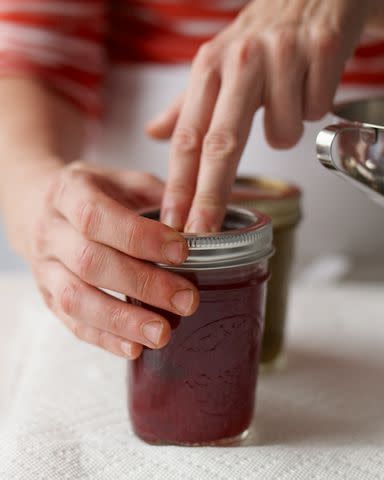
Once cool, check lids for a good vacuum seal by pressing on center of each. If center is pulled down and does not flex, remove band and gently try to lift lid off with your fingertips. If lid does not flex and you cannot lift it off, seal is set. Wipe lid and jar surface with a clean, damp cloth to remove food particles and residue. Label. Store jars in a cool, dry, dark place.
Try our Basic Jam Recipe, which includes instructions for making mixed berry jam, peach jam, raspberry jam, and others.
Read the original article on Martha Stewart.

